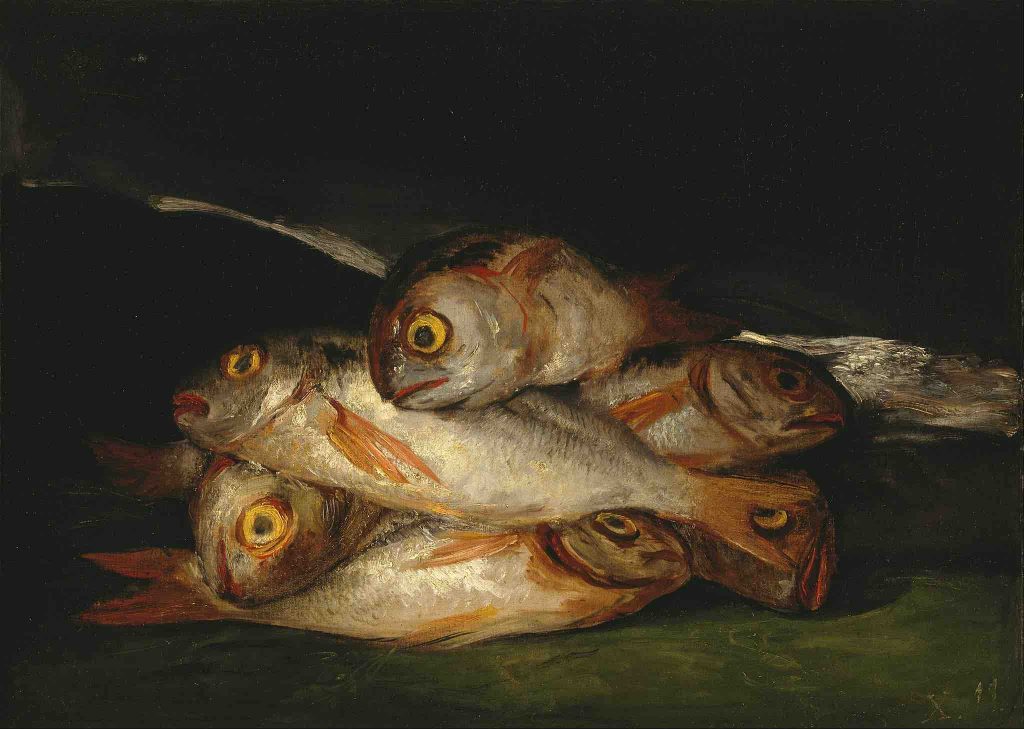When attempting a francisco goya biography, it’s always best to remember the history of the period he lived in.
They were very turbulent and troubled times for Europe, including the Peninsular War – when French forces invaded Spain – and the French Revolution, resulting in great changes.
Francisco Goya was a bit of an enigma, but he succeeded in being a painter both for the Court and for the People.
An artist ahead of his time, he created unconventional works full of personality, showing a critical fascination with violence and aversion to brutality.
Romanticism, Impressionism, Expressionism and Surrealism were all later greatly influenced by his work.
I hope the following facts about francisco de goya will whet your appetite to learn more about his works – many of which can be seen in the Prado Museum, Madrid.
Biography – early years
- 1746 – Born 30 March to José Goya (guilder) and Gracia Lucientes in Fuendetodos, near Zaragoza. Full name Francisco José de Goya y Lucientes.
- 1760 – Aged 14, enters into apprenticeship with painter José Luzán.
- 1763&1766 – Applies twice to study at Spanish Royal Academy, Madrid and is twice rejected. During these early years, he is trained in Baroque and Rococco styles – evident in his early works.
- 1771 – Visits Rome. Wins 2nd prize in the City of Parma painting competition, and is influenced by Classicism and Neo-Classicims. Returns to Zaragoza, where he carries out interesting religious works/frescoes. Now studies under Francisco Bayeu.
- 1773 – Marries Bayeu’s sister – Josefa.
Biography – middle years
- 1774 – As a result of his marriage, Francisco Goya gains access to the Royal Spanish Court. Starts with Royal Tapestry Workshop, designing around 42 patterns over a period of 5 years. Is appointed member of Academy of San Fernando.
- 1780 – Enters Real Academia de Bellas Artes de San Francisco.
- 1783 – Back in Madrid, Count of Floridablanca – favourite of King Carlos III – commissions him to paint his portrait. Goya’s circle of royal and titled patrons grows.
- 1788 – King Carlos III dies, to be replaced by Carlos IV until 1808. Under Carlos IV, goya reaches the peak of his popularity with Royalty. He uses a variety of styles during this period – Rococco often predominating – and is much influenced by Velazquez with his portraits.
- 1792 – Goya becomes deaf (lead in pigments?), resulting in 5 years withdrawal and instrospection. Illness, and shifts in socio-political climate, mature his work.
- 1793-1794 – Paints 11 small pictures on tin called the pictures of “Fantasy and Invention”.
- 1797-1800 – Paints and scandalises Spanish society with his best-known painting – “La Maja Desnuda” (The Nude Maja). Also paints “La Maja Vestida” (The Clothed Maja).
- 1799 – “Los Caprichos” are published – a set of 80 aquatint prints, demonstrating his sharp, satirical wit in a criticism of Spanish society. Recognised as precursor to the Modernist Movement almost a century later. Is appointed Spanish Royal Painter. Paints King and Queen, plus other members of royalty and nobility.
- 1810s – Paints a set of aquatint prints “Los Desastres de la Guerra” (The Disasters of War), depicting scenes from the Peninsular War.
- 1812 – Goya’s wife dies.
- 1813 – King Ferdinand VII now on the throne of Spain. Relations between him and goya are not good.
Later years
- 1814 – Goya lives with his cousin – Rosario Weiss – and her daughter – Doña Leocadia – with whom he’s in love.
- 1819 – After another serious illness, Goya buys a house and lives near Manzanares, on the outskirts of Madrid. His works here epitomize the powerful, dark world of his subconcious and are precursors to Expressionism and Surrealism. Examples include a series of 14 paintings called the “Black Paintings”.
- 1824 – Leaves Spain for Bordeaux and Paris, settling in Bordeaux. Paints new portraits, plus works on the subject of bullfighting. “The Milkmaid of Bordeaux” is his final painting.
- 1826 – Briefly returns to Spain.
- 1828 – Dies in Bordeaux on 16 April.

